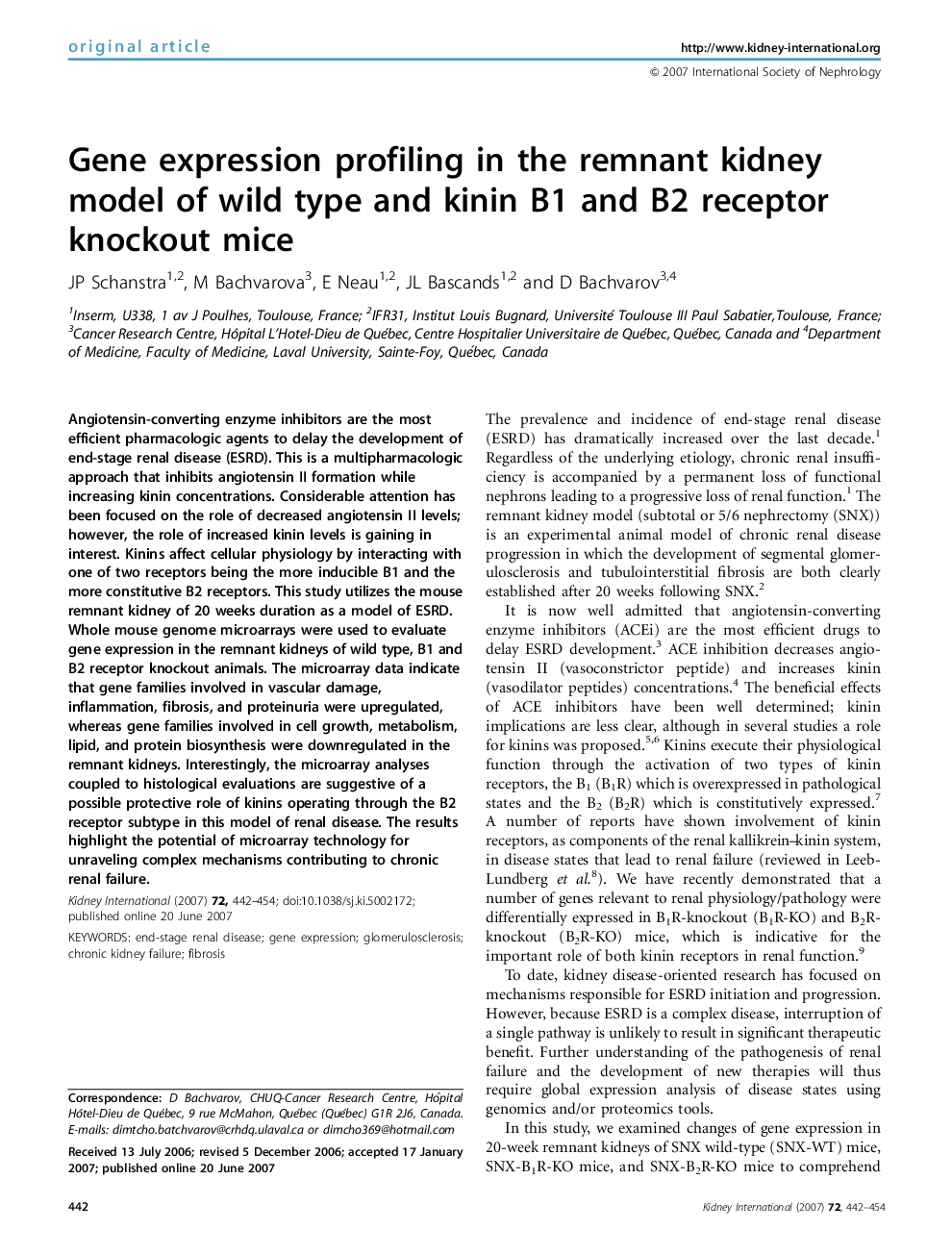| Article ID | Journal | Published Year | Pages | File Type |
|---|---|---|---|---|
| 3885352 | Kidney International | 2007 | 13 Pages |
Angiotensin-converting enzyme inhibitors are the most efficient pharmacologic agents to delay the development of end-stage renal disease (ESRD). This is a multipharmacologic approach that inhibits angiotensin II formation while increasing kinin concentrations. Considerable attention has been focused on the role of decreased angiotensin II levels; however, the role of increased kinin levels is gaining in interest. Kinins affect cellular physiology by interacting with one of two receptors being the more inducible B1 and the more constitutive B2 receptors. This study utilizes the mouse remnant kidney of 20 weeks duration as a model of ESRD. Whole mouse genome microarrays were used to evaluate gene expression in the remnant kidneys of wild type, B1 and B2 receptor knockout animals. The microarray data indicate that gene families involved in vascular damage, inflammation, fibrosis, and proteinuria were upregulated, whereas gene families involved in cell growth, metabolism, lipid, and protein biosynthesis were downregulated in the remnant kidneys. Interestingly, the microarray analyses coupled to histological evaluations are suggestive of a possible protective role of kinins operating through the B2 receptor subtype in this model of renal disease. The results highlight the potential of microarray technology for unraveling complex mechanisms contributing to chronic renal failure.
